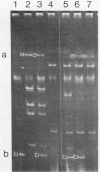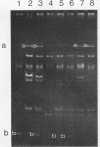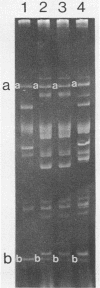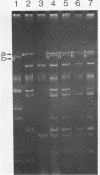Abstract
To determine the possibility of plasmid transfer occurring between strains of Bacillus thuringiensis in infected lepidopterous larvae, Galleria mellonella and Spodoptera littoralis were infected with two or more strains of B. thuringiensis and the resulting bacteria from the dead insects were examined for plasmid transfer. Transfer rates of plasmids coding for crystal production and tetracycline resistance were high, reaching levels similar to those obtained in laboratory broth cultures. Transfer was higher in G. mellonella than S. littoralis, probably due to the greater ability of B. thuringiensis to colonize the larvae. In broth cultures, B. thuringiensis was also able to transfer plasmids into sporeforming bacteria present in soil samples. The results suggest that plasmid transfer between strains of B. thuringiensis occurs in nature, resulting in the production of new combinations of delta-endotoxins within populations of the bacteria.
Full text
PDF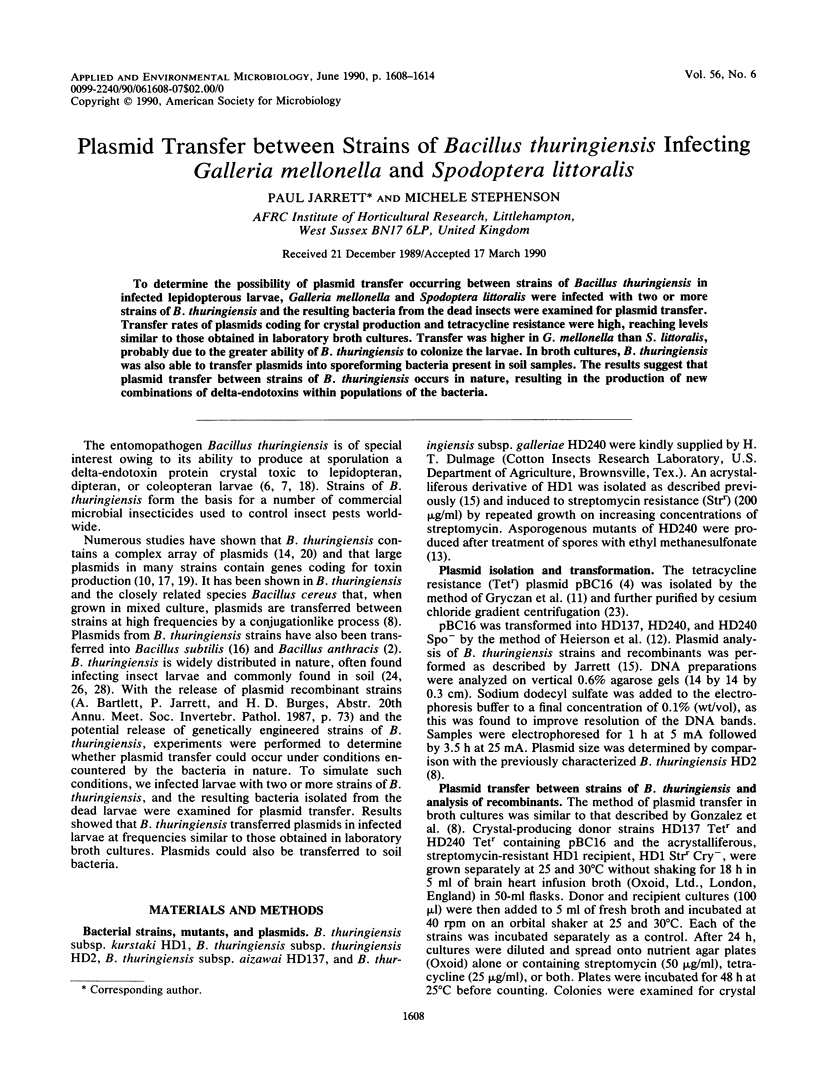
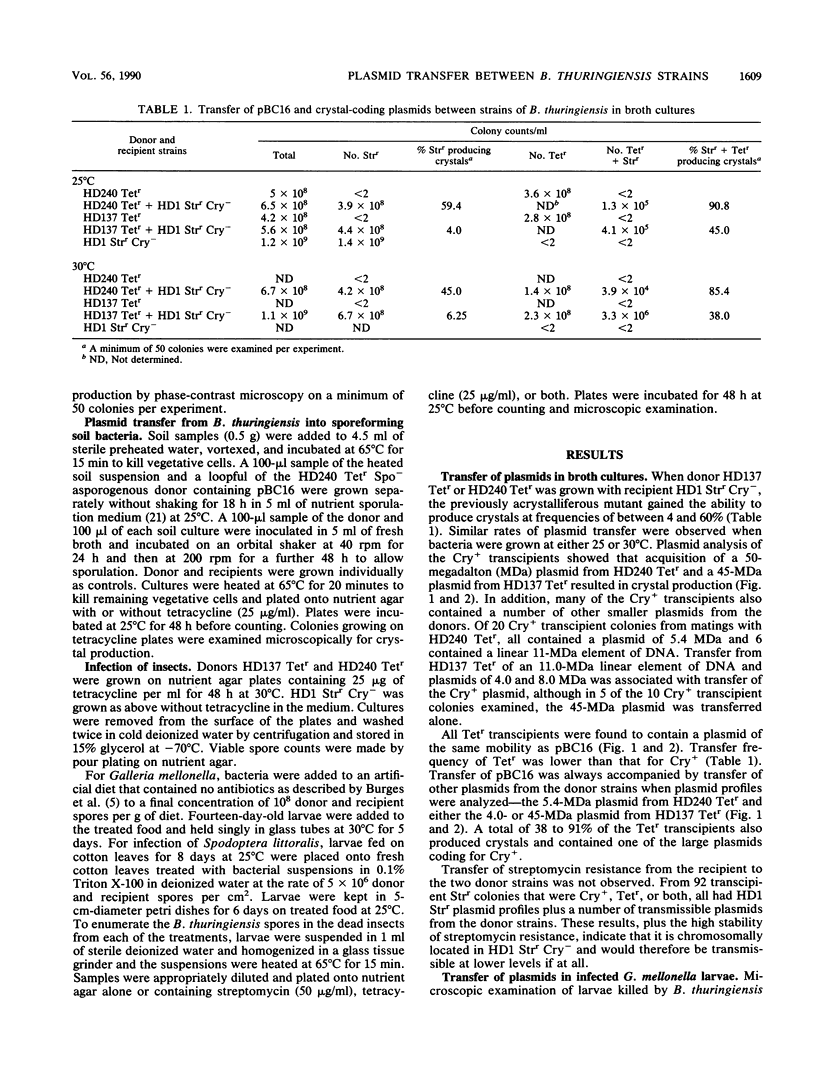
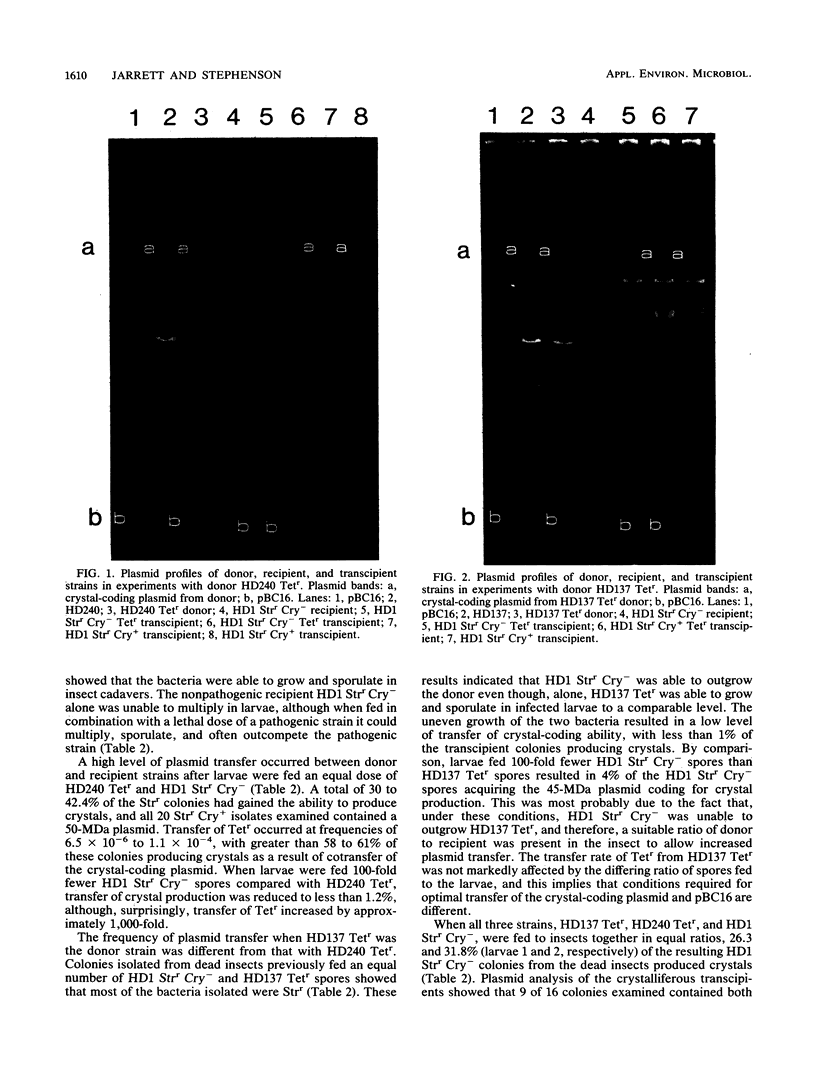
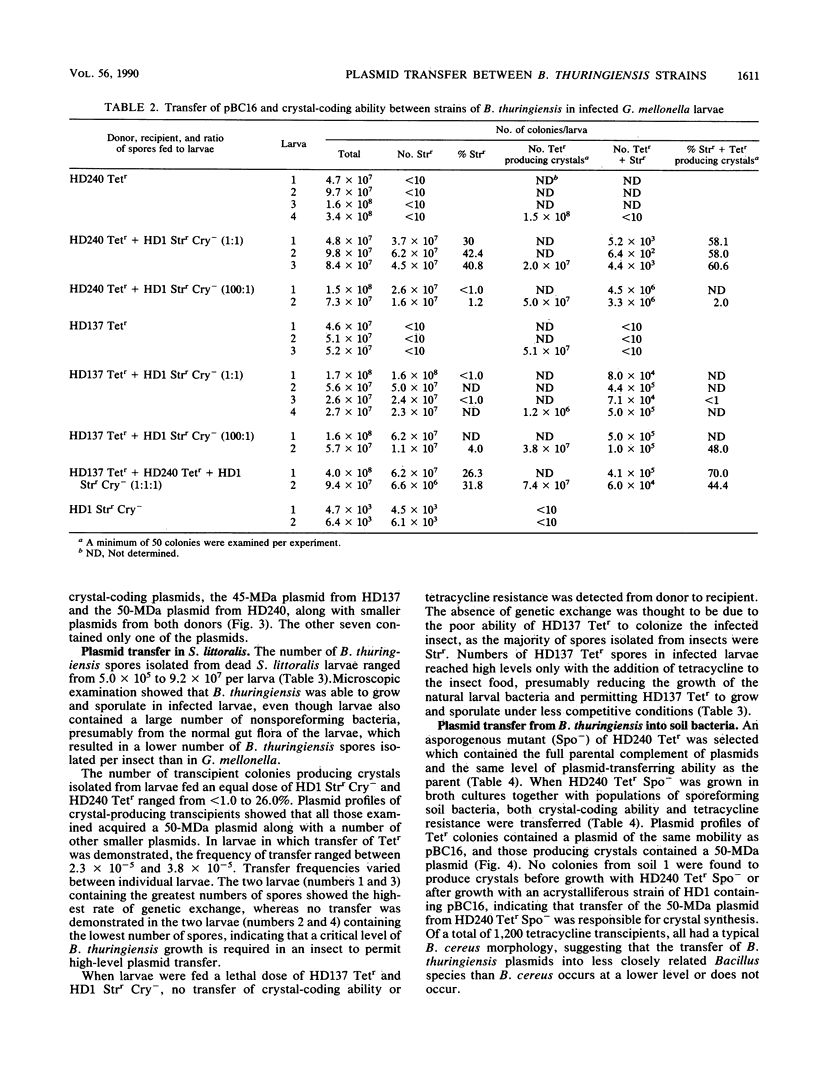
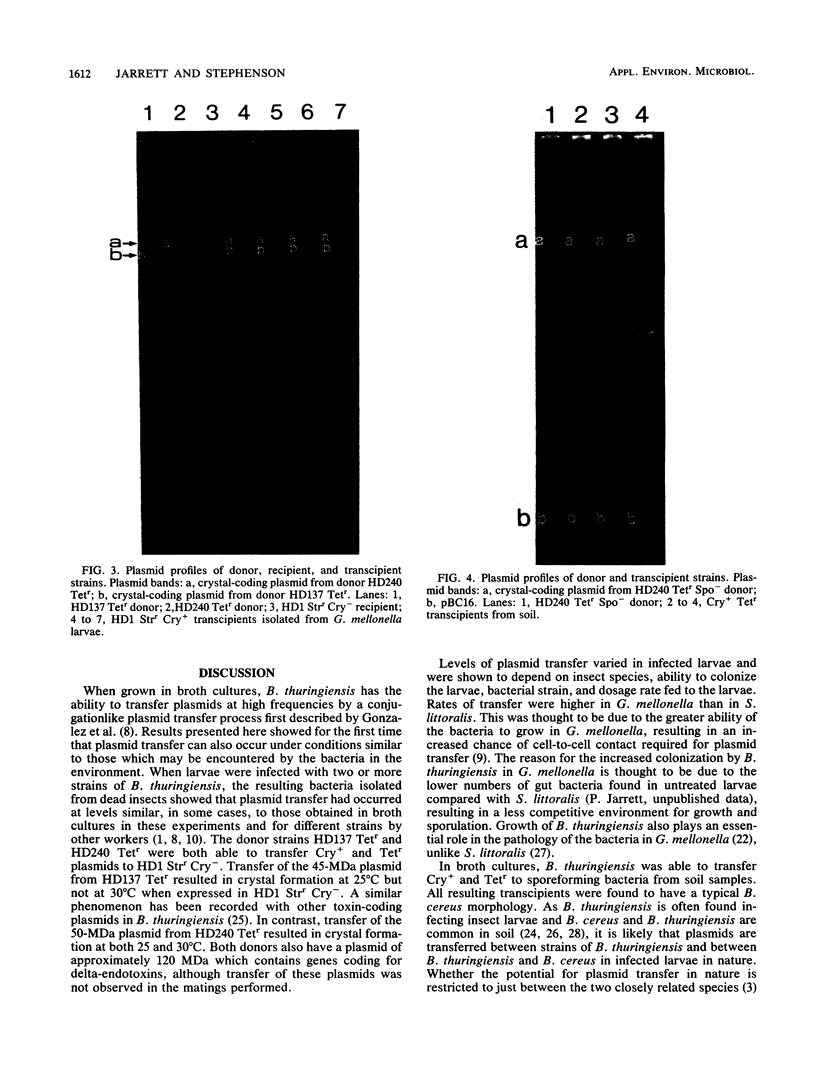
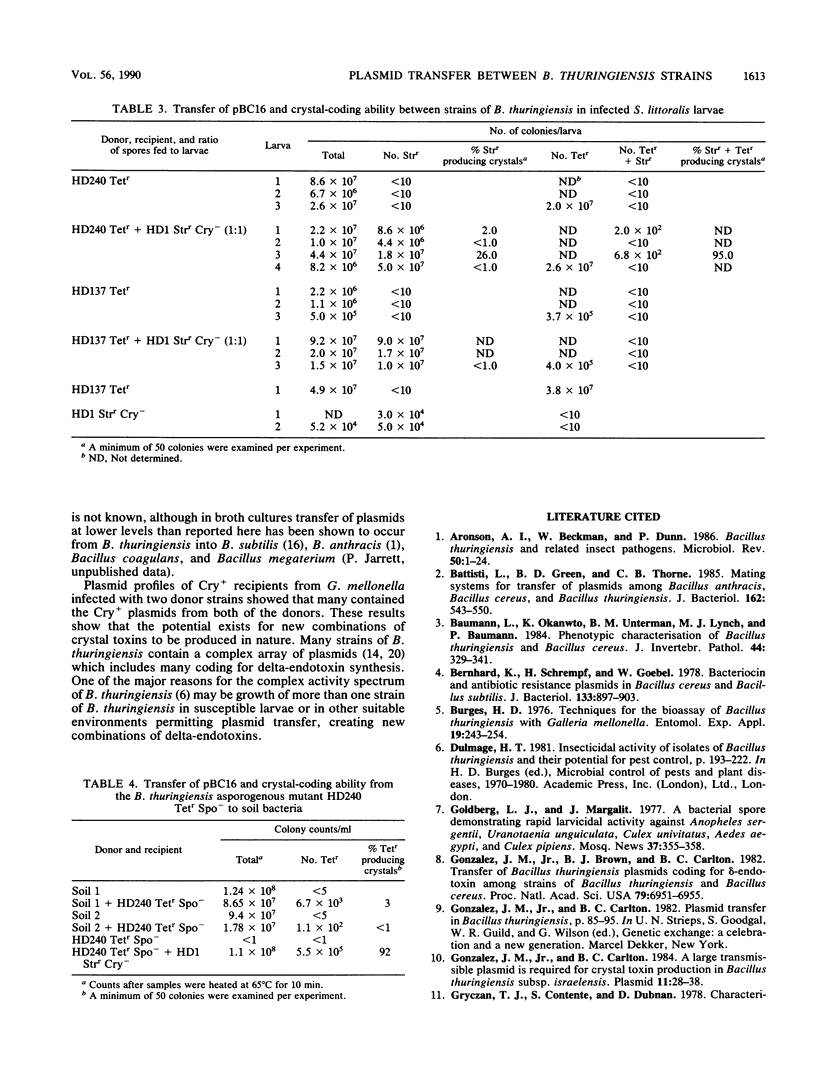
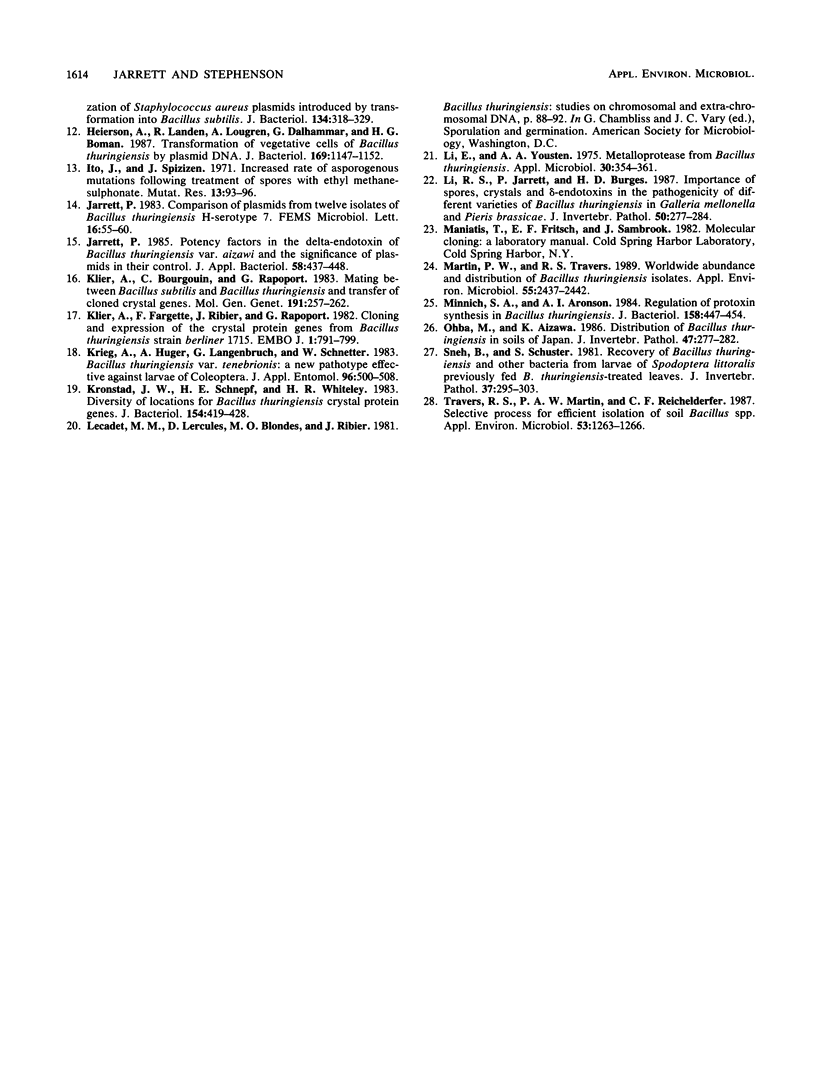
Images in this article
Selected References
These references are in PubMed. This may not be the complete list of references from this article.
- Aronson A. I., Beckman W., Dunn P. Bacillus thuringiensis and related insect pathogens. Microbiol Rev. 1986 Mar;50(1):1–24. doi: 10.1128/mr.50.1.1-24.1986. [DOI] [PMC free article] [PubMed] [Google Scholar]
- Battisti L., Green B. D., Thorne C. B. Mating system for transfer of plasmids among Bacillus anthracis, Bacillus cereus, and Bacillus thuringiensis. J Bacteriol. 1985 May;162(2):543–550. doi: 10.1128/jb.162.2.543-550.1985. [DOI] [PMC free article] [PubMed] [Google Scholar]
- Bernhard K., Schrempf H., Goebel W. Bacteriocin and antibiotic resistance plasmids in Bacillus cereus and Bacillus subtilis. J Bacteriol. 1978 Feb;133(2):897–903. doi: 10.1128/jb.133.2.897-903.1978. [DOI] [PMC free article] [PubMed] [Google Scholar]
- González J. M., Jr, Brown B. J., Carlton B. C. Transfer of Bacillus thuringiensis plasmids coding for delta-endotoxin among strains of B. thuringiensis and B. cereus. Proc Natl Acad Sci U S A. 1982 Nov;79(22):6951–6955. doi: 10.1073/pnas.79.22.6951. [DOI] [PMC free article] [PubMed] [Google Scholar]
- González J. M., Jr, Carlton B. C. A large transmissible plasmid is required for crystal toxin production in Bacillus thuringiensis variety israelensis. Plasmid. 1984 Jan;11(1):28–38. doi: 10.1016/0147-619x(84)90004-0. [DOI] [PubMed] [Google Scholar]
- Gryczan T. J., Contente S., Dubnau D. Characterization of Staphylococcus aureus plasmids introduced by transformation into Bacillus subtilis. J Bacteriol. 1978 Apr;134(1):318–329. doi: 10.1128/jb.134.1.318-329.1978. [DOI] [PMC free article] [PubMed] [Google Scholar]
- Heierson A., Landén R., Lövgren A., Dalhammar G., Boman H. G. Transformation of vegetative cells of Bacillus thuringiensis by plasmid DNA. J Bacteriol. 1987 Mar;169(3):1147–1152. doi: 10.1128/jb.169.3.1147-1152.1987. [DOI] [PMC free article] [PubMed] [Google Scholar]
- Ito J., Spizizen J. Increased rate of asporogenous mutations following treatment of Bacillus subtilis spores with ethyl methanesulfonate. Mutat Res. 1971 Sep;13(1):93–96. doi: 10.1016/0027-5107(71)90130-8. [DOI] [PubMed] [Google Scholar]
- Klier A., Fargette F., Ribier J., Rapoport G. Cloning and expression of the crystal protein genes from Bacillus thuringiensis strain berliner 1715. EMBO J. 1982;1(7):791–799. doi: 10.1002/j.1460-2075.1982.tb01249.x. [DOI] [PMC free article] [PubMed] [Google Scholar]
- Kronstad J. W., Schnepf H. E., Whiteley H. R. Diversity of locations for Bacillus thuringiensis crystal protein genes. J Bacteriol. 1983 Apr;154(1):419–428. doi: 10.1128/jb.154.1.419-428.1983. [DOI] [PMC free article] [PubMed] [Google Scholar]
- Li E., Yousten A. A. Metalloprotease from Bacillus thuringiensis. Appl Microbiol. 1975 Sep;30(3):354–361. doi: 10.1128/am.30.3.354-361.1975. [DOI] [PMC free article] [PubMed] [Google Scholar]
- Martin P. A., Travers R. S. Worldwide Abundance and Distribution of Bacillus thuringiensis Isolates. Appl Environ Microbiol. 1989 Oct;55(10):2437–2442. doi: 10.1128/aem.55.10.2437-2442.1989. [DOI] [PMC free article] [PubMed] [Google Scholar]
- Minnich S. A., Aronson A. I. Regulation of protoxin synthesis in Bacillus thuringiensis. J Bacteriol. 1984 May;158(2):447–454. doi: 10.1128/jb.158.2.447-454.1984. [DOI] [PMC free article] [PubMed] [Google Scholar]
- Travers R. S., Martin P. A., Reichelderfer C. F. Selective Process for Efficient Isolation of Soil Bacillus spp. Appl Environ Microbiol. 1987 Jun;53(6):1263–1266. doi: 10.1128/aem.53.6.1263-1266.1987. [DOI] [PMC free article] [PubMed] [Google Scholar]



